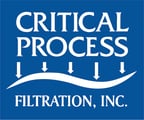Develop quality cell culture media with filters that purify media fluids and raw ingredients.
CPF Sterilizing, Bioburden Control, and prefiltration solutions meet a variety of criteria.
With CPF's filter configuration flexibility, you choose the device type, pore size, and end fittings that target your filtration requirements. Our Applications Engineers help with filter recommendations and perform testing when needed.
The core, cage, and end fittings of all cartridge, capsule, and mini-capsule devices are constructed from the same materials to ensure consistent performance from development through production.
Bacteria Retention Validation
CPF bacteria retention filters are validated using test procedures that comply with ASTM F 838-15(ae1) protocols for the determination of bacterial retention in filters used for liquid filtration. The challenge level is a minimum of 107 organisms per cm2 of filter media. CPF filters have > 7-log removal when challenged with the organisms listed below (0.03μm, 0.10μm, and 0.22μm meet the FDA definition of sterilizing grade filters).
- 0.03μm: Acholeplasma laidlawii
- 0.10μm: Brevundimonas diminuta
- 0.22μm: Brevundimonas diminuta
- 0.45μm: Serratia marcescens
- 0.65μm: Saccharomyces cerevisiae
For mycoplasma, choose any of the sterilizing filters above in a 0.03-micron configuration.
Prefiltration
When media components consist of large amounts of non-biological contaminants, prefilters are a cost-effective and highly efficient solution. CPF offers many prefiltration products that are either integrated into the filter (see BPS and HPPS above) or standalone filters are shown below.
Products
Brochure: Life Science Products
Case Study
How one company keeps up with Cell Culture Media demand despite filtration supply chain issues.
Application Summaries
Quality Assurance and Standards
Critical Process Filtration filters are designed for use in cGMP-compliant processes. Our state-of-the-art manufacturing facility and quality-management system both meet ISO 9001:2015 standards. Each operation from assembly and test to cleaning, drying, and packaging is done in appropriately rated clean rooms, and each filter is assigned a lot of code to ensure the traceability of manufacturing data and materials. A sophisticated MRP system collects and processes real-time data from manufacturing centers and inspection points.
USP Biosafety and FDA Compliance
The materials used to construct pharmaceutical-grade filters are non-toxic and meet the requirements for the MEM Elution Cytotoxicity Test and the requirements for Biological Reactivity Tests in the current version of the United States Pharmacopeia (USP) for Class VI - 121 °C Plastics. Critical Process Filtration filters comply with Title 21 CFR sections 210.3 (b)(6) and 211.72, for non-fiber-releasing filters. The levels of bacterial endotoxins in aqueous extracts from pharmaceutical-grade filters are below current USP limits as specified for water for injection.

-1.png?width=150&name=BPS%20(150%20x%20293%20px)-1.png)
.png?width=150&name=DPPS%20(150%20x%20293%20px).png)
.png?width=150&name=HPPS%20(150%20x%20293%20px).png)
.png?width=150&name=PPS%20(150%20x%20293%20px).png)
.png?width=150&name=SPS%20(150%20x%20293%20px).png)
.png?width=150&name=PTR%20(150%20x%20293%20px).png)
.png?width=175&name=PPD%20(175%20x%20250%20px).png)
%20.png?width=175&name=HLP%20%20(175%20x%20250%20px)%20.png)
.png?width=175&name=PGD%20%20(175%20x%20250%20px).png)